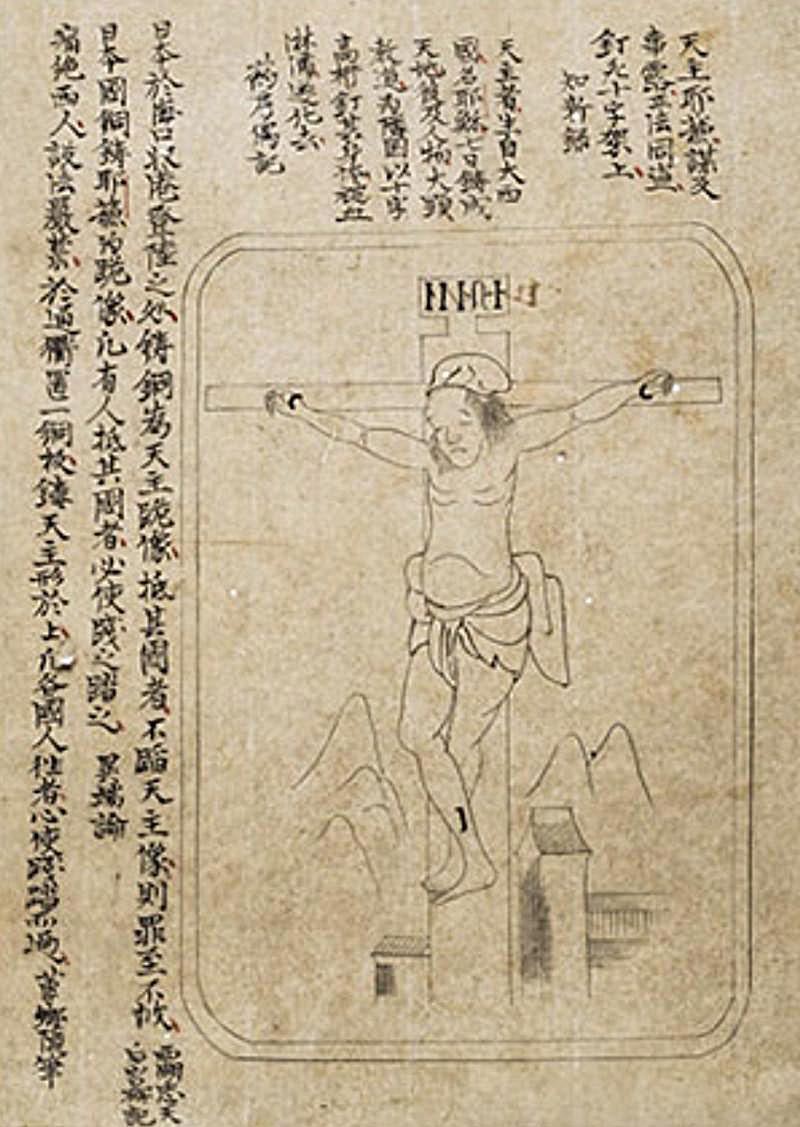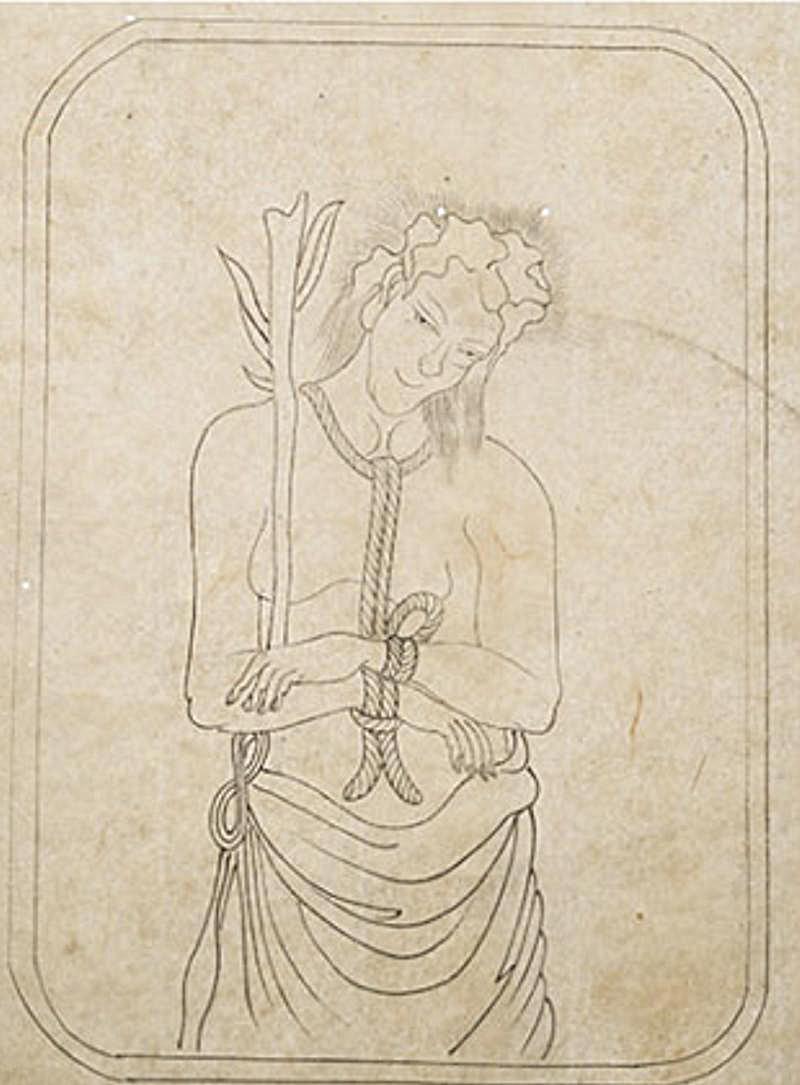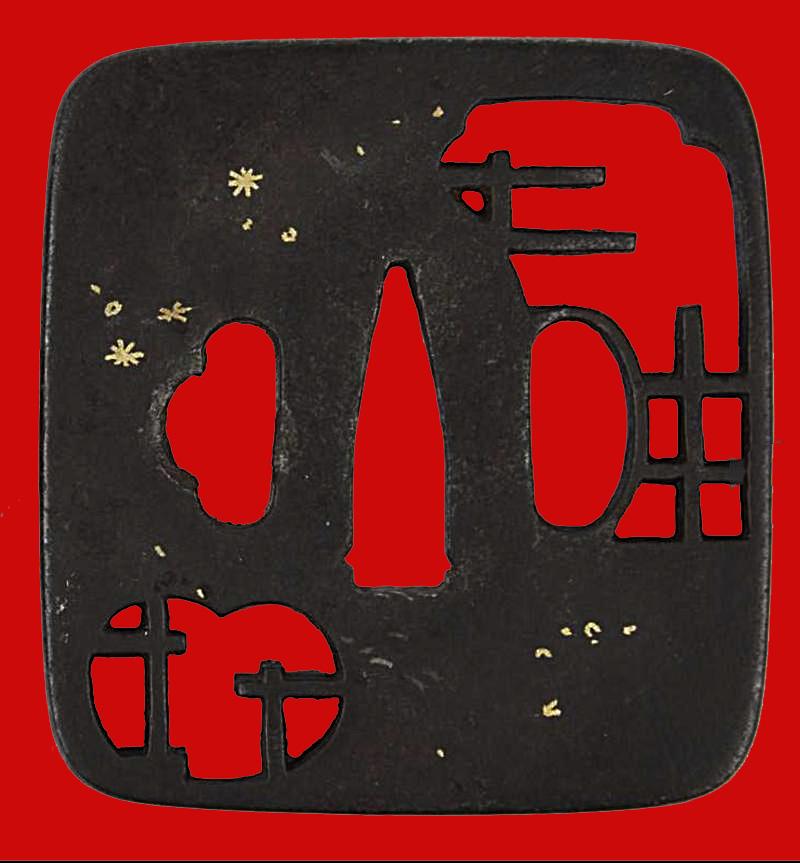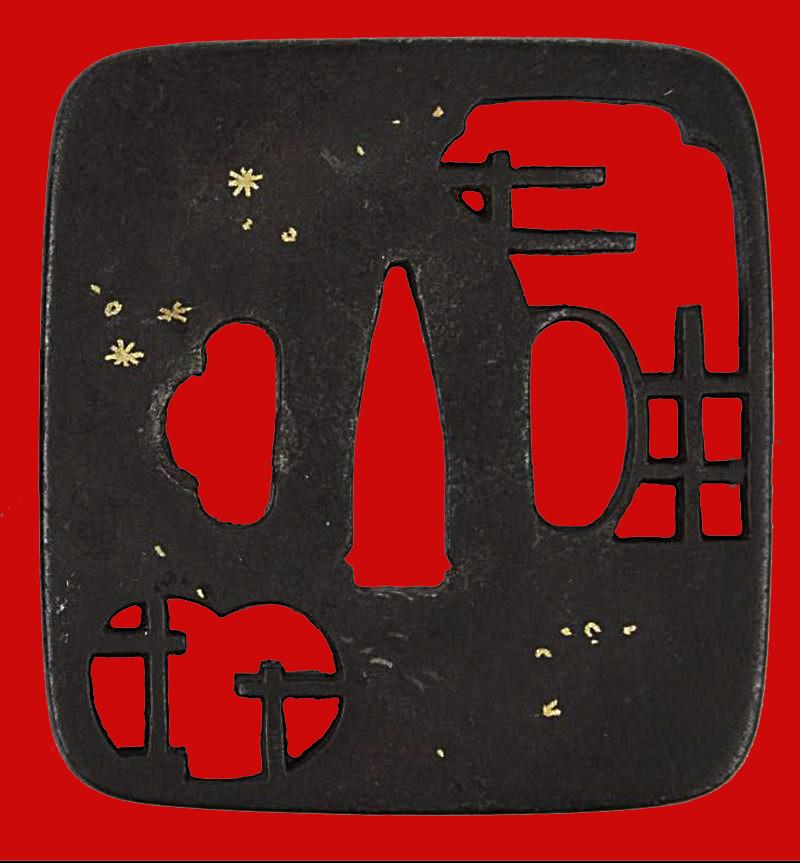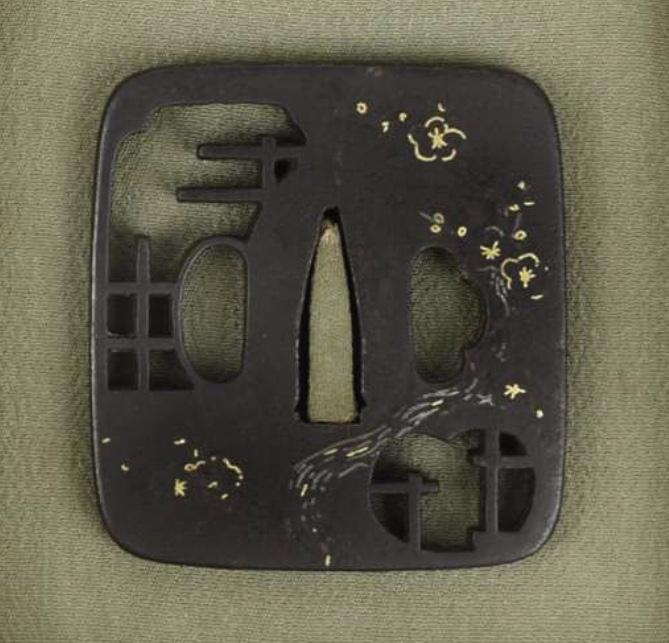A Stunning Edo Period Tettsu {iron Plate} Krishitan {Christian.} Tsuba, Of The Holy Cross, Heavenly Eight Pointed Stars in Gold, & The River Of Life in Silver. In Superb Condition & From A Very Fine Collection of Tsuba.
A stunning Krishitam sukashi piercing of the cross with a silver river and gold eight pointed star inlays. With a kozuka hitsu-ana, and kogai hitsu ana
The Bible starts with an account of a river watering the Garden of Eden. It flowed from the garden separating out into four headwaters. The rivers are named, flowing into different areas of the world,
Eight pointed stars symbolise the number of regeneration and of Baptism. The Stars and The River as Christian Symbols, are images or symbolic representation with sacred significance. The meanings, origins and ancient traditions surrounding Christian symbols date back to early times when the majority of ordinary people were not able to read or write and printing was unknown. Many were 'borrowed' or drawn from early pre-Christian traditions.
The Hidden Christians quieted their public expressions and practices of faith in the hope of survival from the great purge. They also suffered unspeakably if captured and failed to renounce their Christian beliefs.
In Silence, Endo depicts the trauma of Rodrigues’ journey into Japan through his early encounter with an abandoned and destroyed Christian village. Rodrigues expresses his distress over the suffering of Japanese Christians and he reports the “deadly silence.”
‘I will not say it was a scene of empty desolation. Rather was it as though a battle had recently devastated the whole district. Strewn all over the roads were broken plates and cups, while the doors were broken down so that all the houses lay open . . . The only thing that kept repeating itself quietly in my mind was: Why this? Why? I walked the village from corner to corner in the deadly silence.
...Somewhere or other there must be Christians secretly living their life of faith as these people had been doing . . . I would look for them and find out what had happened here; and after that I would determine what ought to be done.”
- Silence, Shusaku Endo
Two images in the gallery are drawings of bronze fumi-e in use during the 1660s in Japan, during the time of the persecution. Each of these drawings mirrors actual brass fumi-e portraying Stations of the Cross, which are held in the collections of the Tokyo National Museum
The current FX series 'Shogun' by Robert Clavell is based on the true story of William Adams and the Shogun Tokugawa Ieyesu, and apart from being one of the very best film series yet made, it shows superbly and relatively accurately the machinations of the Catholic Jesuits to manipulate the Japanese Regents and their Christian convert samurai Lords.
Oda Nobunaga (1534–82) had taken his first step toward uniting Japan as the first missionaries landed, and as his power increased he encouraged the growing Kirishitan movement as a means of subverting the great political strength of Buddhism. Oppressed peasants welcomed the gospel of salvation, but merchants and trade-conscious daimyos saw Christianity as an important link with valuable European trade. Oda’s successor, Toyotomi Hideyoshi (1537–98), was much cooler toward the alien religion. The Japanese were becoming aware of competition between the Jesuits and the Franciscans and between Spanish and Portuguese trading interests. Toyotomi questioned the reliability of subjects with some allegiance to the foreign power at the Vatican. In 1587 he ordered all foreign missionaries to leave Japan but did not enforce the edict harshly until a decade later, when nine missionaries and 17 native Kirishitan were martyred.
After Toyotomi’s death and the brief regency of his adopted child, the pressures relaxed. However, Tokugawa Ieyasu, who founded the great Tokugawa shogunate (1603–1867), gradually came to see the foreign missionaries as a threat to political stability. By 1614, through his son and successor, Tokugawa Hidetada, he banned Kirishitan and ordered the missionaries expelled. Severe persecution continued for a generation under his son and grandson. Kirishitan were required to renounce their faith on pain of exile or torture. Every family was required to belong to a Buddhist temple, and periodic reports on them were expected from the temple priests.
By 1650 all known Kirishitan had been exiled or executed. Undetected survivors were driven underground into a secret movement that came to be known as Kakure Kirishitan (“Hidden Christians”), existing mainly in western Kyushu island around Nagasaki and Shimabara. To avoid detection they were obliged to practice deceptions such as using images of the Virgin Mary disguised as the popular and merciful Bōsatsu (bodhisattva) Kannon, whose gender is ambiguous and whom carvers often render as female.
The populace at large remained unaware that the Kakure Kirishitan managed to survive for two centuries, and when the prohibition against Roman Catholics began to ease again in the mid-19th century, arriving European priests were told there were no Japanese Christians left. A Roman Catholic church set up in Nagasaki in 1865 was dedicated to the 26 martyrs of 1597, and within the year 20,000 Kakure Kirishitan dropped their disguise and openly professed their Christian faith. They faced some repression during the waning years of the Tokugawa shogunate, but early in the reforms of the emperor Meiji (reigned 1867–1912) the Kirishitan won the right to declare their faith and worship publicly.
Some wear to the gold and silver inlays on the reverse side.
Code: 25311
1495.00 GBP


